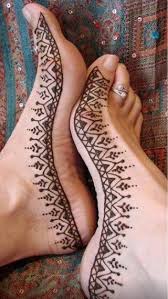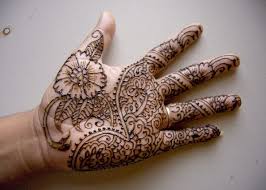Henna is a shrub native to the Mediterraneanregions, whose leaves have been used as a hairconditioner and hairdye since the 7th millennium BC. When traveling to Morocco henna can be found in Morocco's souks and markets.
Some view Henna only as a bodily adornment or an alternative to a permanent tattoo, but in Morocco
.
Henna is a dyeproduced from the Henna plant. To create the dye, dried Henna leaves are groundintopowder and mixedwithwater,tea, orlemonjuice. The greener the powder, the more effective the paste will be to dye the skin red.
The many names and spellings for Henna (Mendhi, Al-Henna, and Mehandi) make it difficult to pinpoint the exact origins of Henna. However, it is fairly certain that it was developed in Northern Africa and later introduced to Asia and India
In Morocco Morocco 
Id-al-Adha is a three day Islamic holiday marking Abraham’s strong devotion to God when he agreed to sacrifice his only son Ishmael. As the story goes, God took pity on Abraham and gave him a sheep to sacrifice instead. Consequentially, it is Moroccan tradition for the head of a household to offer sheep at the culminating point of the Hajj festivities. During the ceremony, the sheep, his sacrificer, and guests are decorated with Henna.
Circumcision is another unique celebration where all festival participants and the honored guest are painted with Henna. This Islamic holiday began in the 19th and 20th century in the villages of Morocco
The best known tradition where Henna is present is the “Henna ritual”. The night before her wedding ceremony, the bride and her negaffa (older married women), gather together to share the secrets of marriage and preparing her for her first marital relations. This is a rite of passage and the bride is adorned with Henna; it marks her metamorphosis from a young girl to a wife.
The Berber marriage ceremony includes painting the hands and feet of the bride with the most intricate patterns. Common Henna themes are floral or geometric designs, often including the groom’s name discreetly inside the tattoo. As with many Berber customs, the usage of Henna is thought to bring good health and luck to the bride and protect her from harm.
Although the usage of Henna is a sacred one in Morocco 
Many people who opt for the Henna experience can choose from simpledesigns on a singlebodypart, while others are more adventurous and choose designs running from the soles of their feet to their ankles or from hands to wrists.
Based on what part of Morocco
Depending on the size and details of the pattern, applying Henna takes anywhere from twenty minutes to an hour. When the work is complete, the artist will squeeze lime juice and sugar over the paste because it will help release the color in the powder. Once the paste falls off, most Henna appears reddish brown, however, everyone’s skin is different so the final shade may vary.
The usage of Henna symbolizes a markofidentity and is an act of embracing beauty. Whatever your personal choice for trying Henna, it is certain that it will be an exciting and cultural experience.
Henna tattoos are available to tourists and Moroccans in Djemma el Fna Square
.
No comments:
Post a Comment